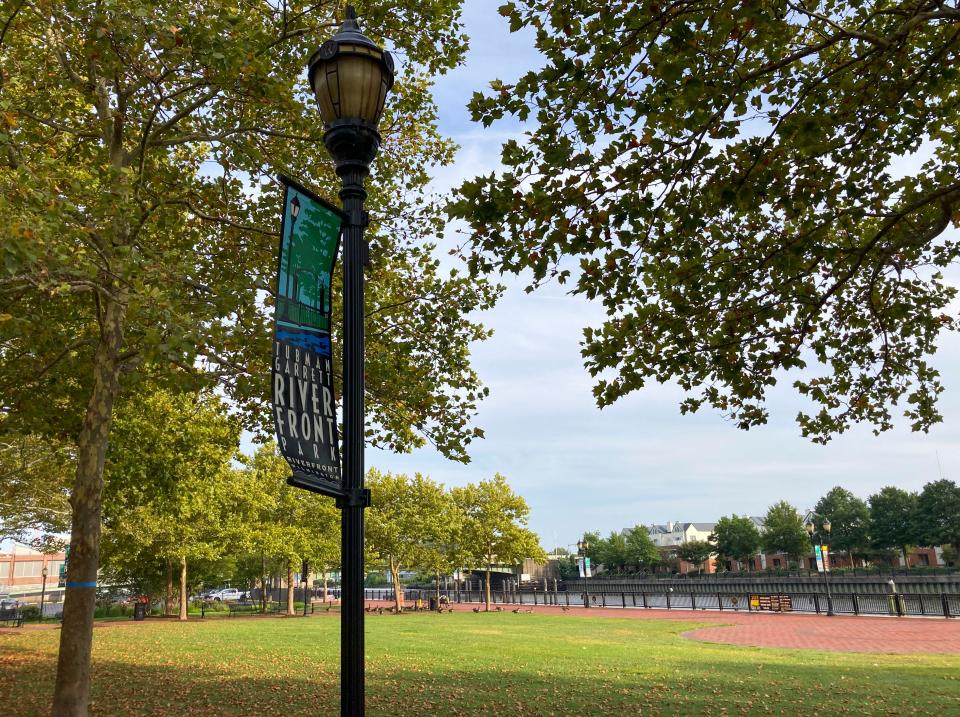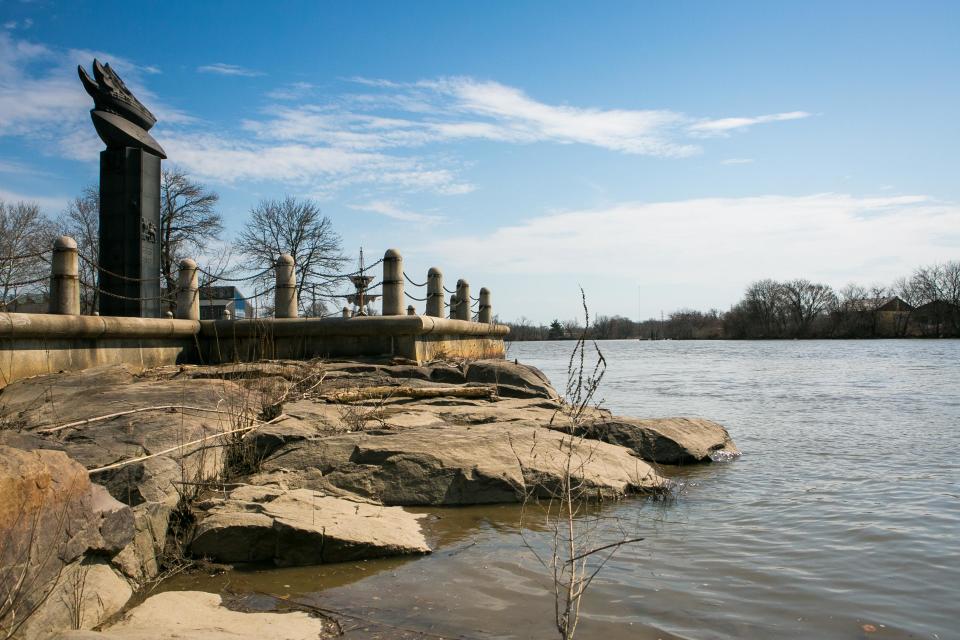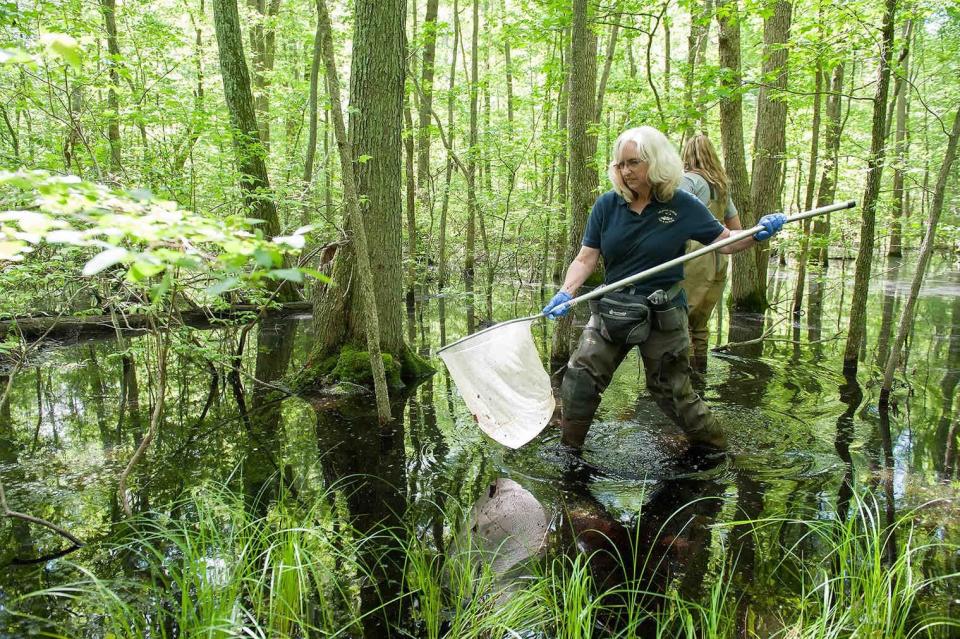6 Underground Railroad sites to visit in Delaware
Deep in the depths of America's history lies the Underground Railroad, a system of secret routes, safe houses and efforts made in order to free enslaved people during the 1800s.
Documented sites on the route lie throughout Delaware, where the Harriet Tubman Underground Railroad byway — which spans 125 miles — passes through, once leading thousands of enslaved individuals to freedom.
More: Looking to engage with history? Here's your guide to Black History Month events in Delaware
Here are some of those sites across the state.
Market Street Bridge and Tubman-Garrett Park

Although one of the most difficult spots in the system due to being a high-patrol area, the Market Street Bridge and Tubman-Garrett Park are some of the most notable spots for the Underground Railroad in the state. Multiple accounts by Tubman have been noted from the area, and the site is part of the National Park Service's National Underground Railroad Network to Freedom. The park is dedicated to Tubman and Thomas Garrett, an American abolitionist, both leaders in the Underground Railroad movement.
According to the Harriet Tubman Byway website, "Tubman and her charges were once trapped on the south side of the river by the constables and slave catchers on the lookout for them. Garrett sent a false-bottomed wagon, driven by African American bricklayers, who concealed the group beneath a load of bricks. They successfully passed over the bridge and by authorities unnoticed."
Address: Christina Riverfront, 40 Rosa Parks Drive, Wilmington
Old Town Hall, Delaware Historical Society at North Market Street
The space served as a place for abolitionists and pro-slavery lectures with permission of the City Council, according to the state. Abolitionists from a multitude of states spoke at the Old Town Hall, although Frederick Douglass was denied.
There are also basement jail cells in the building, which held freedom seekers who were caught and would eventually be brought to jail, as Wilmington tried to comply with federal fugitive slave laws.
Old Town Hall, which was built in 1798, is also a part of the Delaware History Museum.
Address: 504 N. Market St., Wilmington
The Rocks at Fort Christina Park

The Rocks, which is also a part of the National Park Service's Underground Railroad Network to Freedom, was once a place for ship captains to bring freedom seekers.
One of those captains was Wilmington's James Watson Fountain, who carried freedom seekers for a fee.
According to the state, "[Fountain] was described in period accounts as a fearless and bold Underground Railroad pilot, in a time when the penalties for white persons assisting freedom-seekers included long jail sentences and seizure of assets."
Address: 1110 E. Seventh St., Wilmington
More: Happy Black History Month! Here's what to know about how it started, the 2024 theme, more
Wilmington Friends Meeting and Cemetery
The cemetery and meeting space, which is listed on the National Park Service's Underground Railroad Network, played an important role in the system as Quaker opposition to slavery began to grow. Garrett, along with his second wife, is buried in the cemetery.
According to the state, "Not all Quakers agreed to act in the same way, however, with some going beyond moral opposition to slavery, to openly defying what they felt were unjust laws. Thomas Garrett, Samuel Wollaston, and other members were in the latter category, using their homes and personal means to assist freedom seekers. There is no evidence that this meeting house was used to shelter freedom seekers, but it is still a significant reminder of the movement."
Quiet visitation is allowed in the cemetery.
Address: 401 N. West St., Wilmington
Appoquinimink Friends Meeting House
According to the National Park Service, the Appoquinimink Friends Meeting House "erected in 1783, [and] is located in a community where a strong Quaker antislavery movement existed. The Meeting House is associated with John Hunn (1818-1894) and John Alston (1794-1874), two Underground Railroad "station masters" who were members of the congregation."
The meeting house is open by appointment only, which can be made when contacting the Wilmington Monthly Meeting House at 302-652-4491 or wilmmtg@juno.com.
Address: 624 Main St, Odessa
Blackbird State Forest

Tubman, who mentioned the landmark, may have been referring to one or more of the free Black communities that once existed within the area, according to the Harriet Tubman Byway website.
The forest also features a marker for Underground Railroad supporters John Hunn and John Alston, who used to farm in the area. It also tells the story of operative Samuel D. Burris and the Hawkins Family, who were freedom seekers during the time period.
Address: 502 Blackbird Forest Road, near Smyrna
Other information, along with more locations, can be found on the Harriet Tubman Byway website at harriettubmanbyway.org/byway-sites/.
More: New database highlights African American burial grounds across Delaware
This article originally appeared on Delaware News Journal: 6 Delaware Underground Railroad sites to visit

